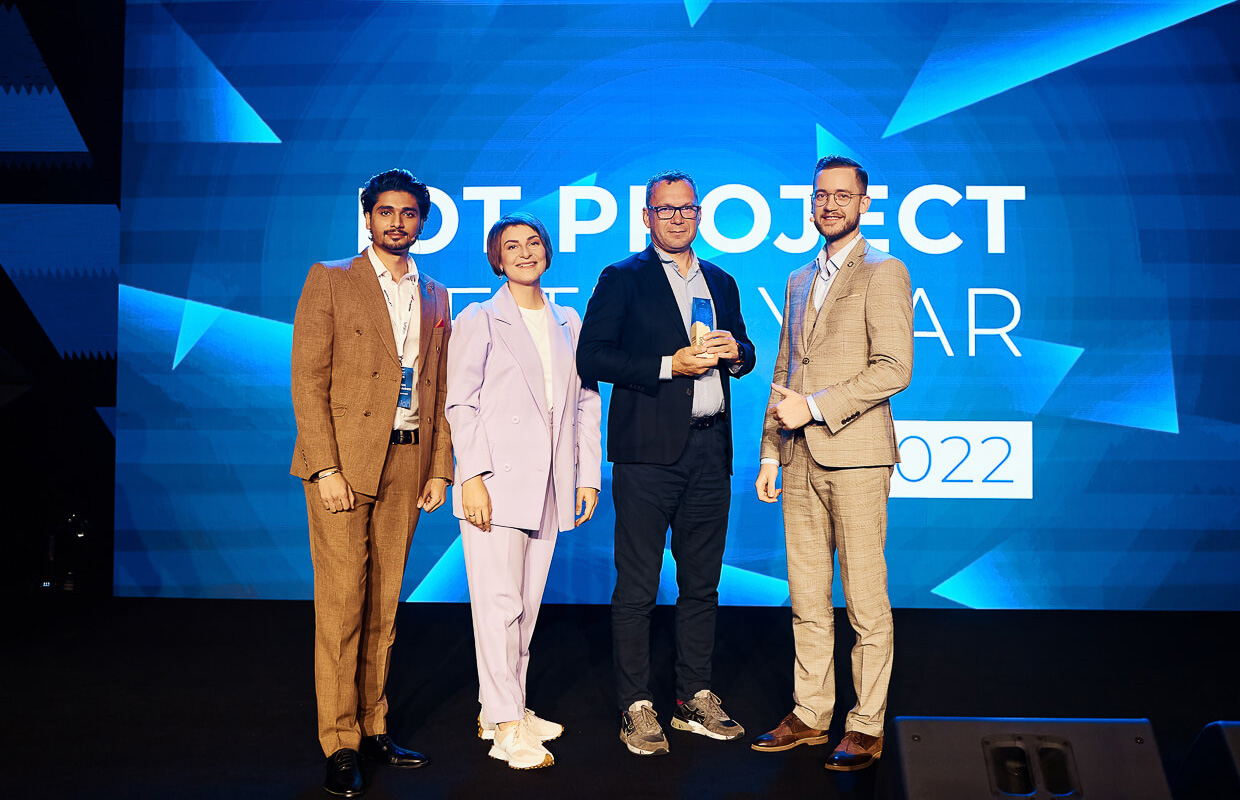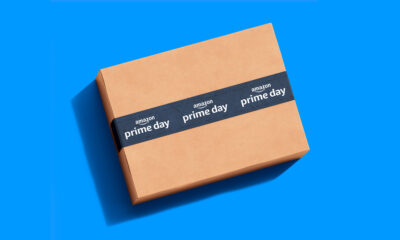News
How To Create An Effective GPS Tracking Solution In The Middle East
With such a strong and growing demand for GPS tracking technology in the Middle East, here’s how to create the most effective solution.
The demand for GPS tracking systems in the Middle East is constantly growing. In 2023, this market in the region is expected to reach a compound annual growth rate (CAGR) of 19.29%, leading to a revenue of USD 2.71 billion.
Several factors cause such hype around the IoT and telematics. First, Middle Eastern countries import a lot of smart state-of-the-art vehicles. It determines the demand for advanced telematics systems that streamline fleet management and make it more convenient. Second, countries like Saudi Arabia, Qatar, and the United Arab Emirates are leading the way in smart cities, which naturally results in the mass employment of IoT technologies for intelligent transportation as well.
Creating An Effective Client-Oriented GPS Tracking Solution
A successful solution for GPS tracking usually comprises four elements: reliable hardware, a user-friendly IoT platform, continuous technical support, and a strong focus on customer needs. And further on, using the example of a real use case, we will show you how to successfully combine all these elements in one solution. This project is the winner of the international competition for telematics and IoT solutions IoT project of the year 2022, organized by Wialon, the ultimate platform for GPS tracking and IoT.

Edvardas Linkevicius, Managing Director, Ruptela (second from the right), at the IoT project of the year 2022 award ceremony.
Ruptela, one of the leading GPS hardware manufacturers in Lithuania, that occupies the 5th position in the GPS Hardware Manufacturers Top 10 2022 ranking, and Xsense, a GPS tracking system developer from Thailand, joined forces to solve the everyday operating issues of Thailand Post Distribution. Among the problems the organization faced were unauthorized vehicle use, cargo and truck theft, high fuel consumption, and reckless driving.
The Solution To Cope With The Client’s Issues
Ruptela and Xsense considered all those issues and provided the client with a full-fledged vehicle GPS tracking system with the requested features including real-time vehicle tracking, driver identification and behavior monitoring.
Within this project’s scope, Xsense GPS tracking system enabled the client to access the location of their vehicles and other telematics data collected from Ruptela’s hardware. The client’s vehicles were equipped with Ruptela Pro5 GPS tracker, complemented with an MCR (magnetic card reader) and voice playback hardware specifically designed for the project. The MCR accessory allowed the client to identify drivers and helped to cope with vehicle misuse or thefts. It also ensured drivers’ authorization before starting a trip by providing repeated voice alerts. In addition, the voice playback solution alerted drivers when they were overspeeding, harsh braking, and accelerating. As a result, it helped improve driving skills and resulted in reduced fuel consumption.
Besides, Xsense GPS tracking system generated reports on violations allowing Thailand Post Distribution to learn when and where violations occurred and support evidence with exact data. Together, Ruptela hardware and Xsense GPS tracking technology gave the customer effective means of overseeing the fleet and promoting responsible driving habits among the company drivers.
Expanded Technical Support
Providing constant support to customers and putting emphasis on their requirements are two factors previously identified as crucial to creating effective IoT solutions. Ruptela delivered excellent technical support throughout the project by assisting the client in configuring their devices to speed up the installation process.
Ruptela’s field application engineers guided the client’s employees through the onboarding processes offering hands-on training on installing devices and providing the comprehensive documentation. Further, Ruptela’s 24/5 multilingual support team was always available to assist with any concerns.
The Project Results
As a result of this project, Ruptela and Xsence provided Thailand Post Distribution with a full-fledged vehicle fleet management system with all the requested features that determine a successful IoT project we mentioned previously.
First, the proven GPS trackers manufactured by Ruptela were complemented with MCR and voice playback hardware to cover the client’s specific challenges, meaning that the client’s employees drive more carefully and identify themselves precisely. Moreover, improved driving behavior reduces fuel consumption. Second, the GPS tracking system developed by the experienced Xsense team ensured real-time vehicle tracking and fleet management. So, the Thailand post could always track vehicle location and take action immediately in case theft is suspected. Third, Ruptela’s technical support allowed Thailand Post Distribution personnel to focus on their work instead of worrying about the hardware setup and other related issues. And last but not least, when developing the solution, Xsense and Ruptela kept the project peculiarities and customer requirements in mind, which eventually helped them cope with the client’s problems such as vehicle misuse, unsafe driving, high fuel consumption, etc.
The primary project outcome is a satisfied client who now has a solution that helps address several challenges, improve service quality, reduce costs, and meet government requirements.
News
Mamo Completes $3.4M Funding Round To Enhance Fintech Services
The startup will use the influx of cash to expand into Saudi Arabia and across the wider GCC while improving its product offering.

UAE-based fintech Mamo has announced the completion of a $3.4 million funding round that will help the startup extend its market presence and improve its product offering. Investors included 4DX Ventures, the Dubai Future District Fund and Cyfr Capital.
Mamo’s platform offers “payment collection, corporate cards and expense management” to help small and medium-sized businesses consolidate and streamline their operations. With the latest influx of capital, Mamo will further develop its comprehensive suite of services and begin testing its product lines in Saudi Arabia, further extending its footprint across the GCC.
Imad Gharazeddine, co-founder and CEO of Mamo, stated: “We’ve been in the market for a while now and are incredibly proud of what our team has achieved. The holistic and expansive nature of our product offering has helped us continue to grow sustainably. This additional funding will allow us to reach our medium-term goals even faster. The support from new and existing investors is a testament to our strong expertise and the ability to deliver on our customer promise”.
Daniel Marlo, General Partner of lead investor 4DX Ventures, added: “We have immense trust in Imad’s vision, leadership and Mamo’s innovative approach to provide a user-friendly and comprehensive financial solution for SMEs that makes financial management more accessible and efficient. We are proud to partner with them and support their mission”.
Also Read: A Guide To Digital Payment Methods In The Middle East
Amer Fatayer, Managing Director of Dubai Future District Fund’s investment team, also commented: “Mamo’s localized product lines serve as an infrastructure for SME payments and spend management in UAE, a segment that is underserved by the country’s current banking infrastructure. The team has taken a product-first approach to consolidating SMEs’ financial journeys and building a fintech solution deeply embedded in a business’s core operations”.
To date, Mamo has raised around $13 million in investment funding and now boasts a team of 30 people. The company’s intuitive financial services platform has allowed over 1,000 businesses to consolidate their financial operations and significantly reduce payment fees.
-

 News4 weeks ago
News4 weeks agoAmazon Prime Day 2024: Get Ready For 6 Days Of Amazing Deals
-

 News4 weeks ago
News4 weeks agoSamsung Unpacked 2024: What To Expect From The July 10 Event
-

 News3 weeks ago
News3 weeks agoCoursera Report Shows Surge In UAE Interest In AI Upskilling
-

 News4 weeks ago
News4 weeks agoMeet Dubai’s Groundbreaking Smart Robot Delivery Assistant










